1. FUTURE
A shot of the desert, long focus, a rectangle of sand wavering under a blue sky. An automobile of no recognizable model glides right to left across the horizon, its chrome body a silver droplet in the distance.
Close-up on the car’s only passenger, a woman, played by one of the most well-known actors of the day. Dressed in a dark business suit, she is seated in the car’s back seat, the panoramic rear windshield wrapping around her. A briefcase is handcuffed to her right wrist.
The woman shifts her eyes off the monotonous landscape to glance at the dash display. The screen reads: “Cruise. Destination: Las Vegas. Arrival time: 7:35 p.m.” Two different monitors show images of the road, fore and aft, both in strong one-point perspective.
It is then that the passenger notices a second silver droplet quivering on one of the monitors. She turns to look out of the window behind her into the glaring sun.
A new shot shows a second car behind hers, no more than a mile away. How long has it been there?
“Increase speed to seventy,” she says.
The vehicle gently accelerates as the woman keeps her eyes fixed on the car behind her. It, too, increases its speed. There is no longer any question about whether she is being followed.
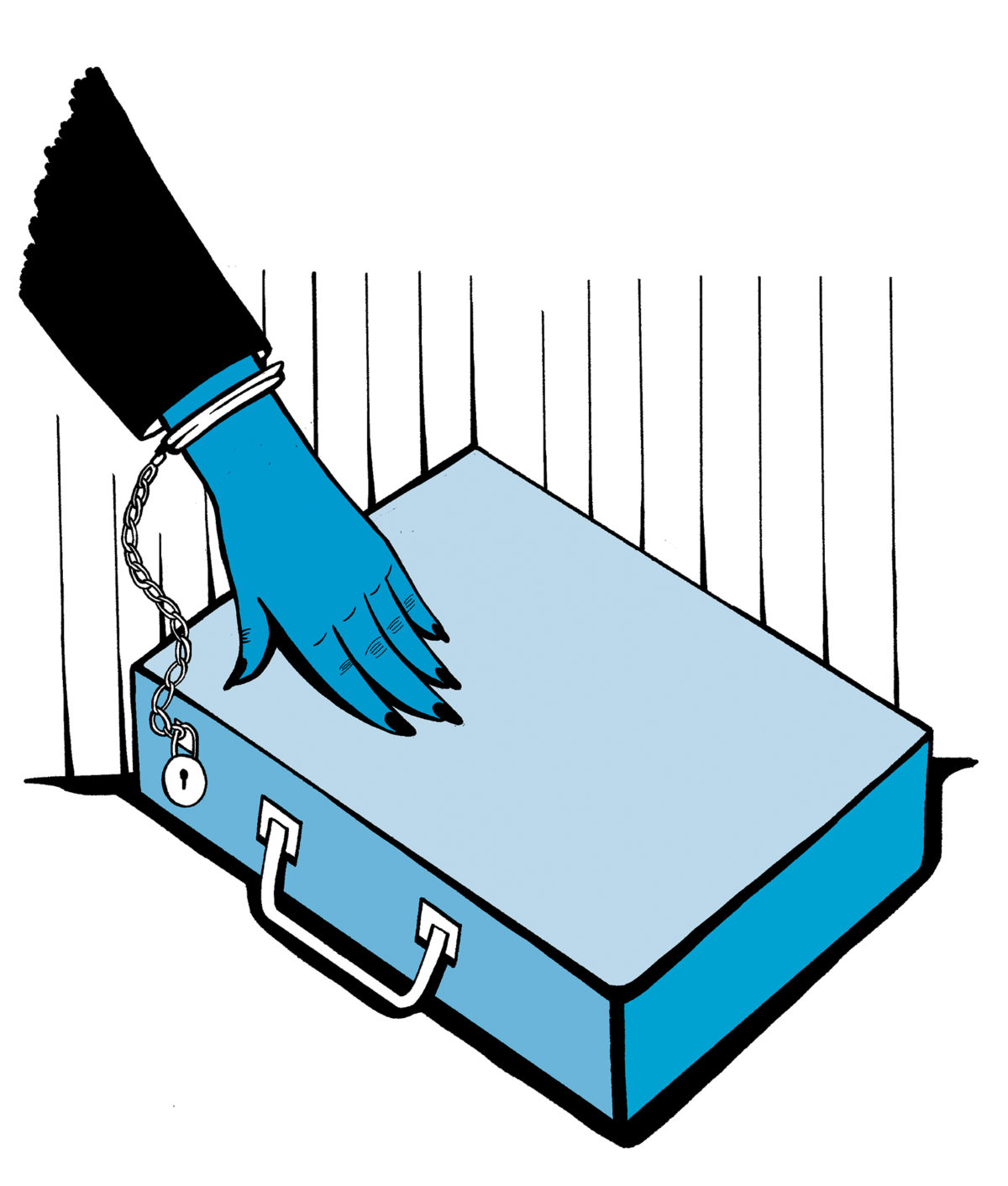
2. AUTONOMY
The scene is from a movie not yet made, maybe never to be made. It is a scene that exists after cars drive themselves and humans become permanent passengers. To a future audience, the scene’s technology might appear banal. The viewers might have opinions about what to do next, possible ways out. They might expect the car’s speed limit to be hacked or question why the woman doesn’t contact a police drone. To us, the scene is hypothetical, just like the widespread adoption of driverless technology itself. This adoption is far from certain, and although tech companies would like us to believe otherwise, their pattern of overpromising and underdelivering only makes the future seem permanently postponed.
Meanwhile, autonomous vehicles circulate at the edges of our awareness. Few people are asking for driverless cars, and those that are—executives, engineers, investors—have a stake in the technology’s success. The lack of interest is understandable: Automated driving will mostly benefit the transportation companies who treat their drivers as an unnecessary expense. Safety is the pitch made to the rest of us, but even if the number of accidents decreases, automated driving will likely cause many millions of professional drivers worldwide to lose their jobs.
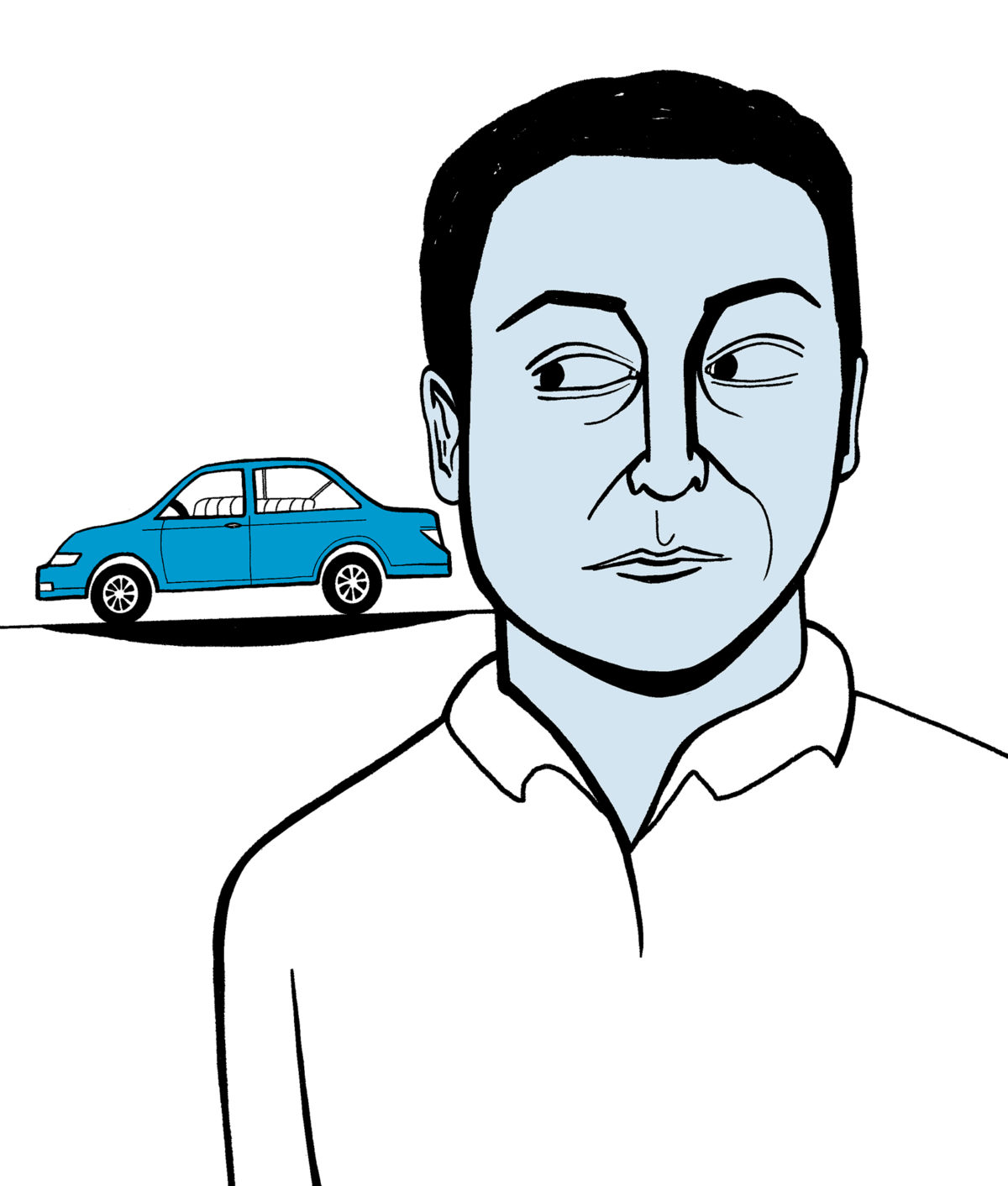
The automobile built the American economy. It is the machine that led to modern mass production, Fordism, General Motors’ Sloanism, as well as the Toyota Production System. American industrial manufacturing helped win the Second World War largely due to the lessons learned from the auto industry.
The automobile also changed the way Hollywood told stories. It provided a new means for characters to escape from family and society, becoming a literal and figurative vehicle for freedom. As a space both interior and exterior, private and public, the automobile offered a novel setting for drama and action. From traffic jams to carjackings, getaway cars to carpools, teen sex comedies to slasher films, the automobile reshaped cinematic narrative. What happens to movies, then, when the automobile drives itself? What happens to the car chase, the biker gang, the forlorn trucker, the getaway car, the psychopathic taxi driver? What happens when automation takes command?
3. FASCINATION
A history of the movies could be written solely through its drives. Ingrid Bergman and George Sanders on their way to a villa near Naples. Janet Leigh parking at the Bates Motel. Abbas Kiarostami’s “director” blocked on his way to Koker. Faye Dunaway clarifying that she drives a stolen four-
cylinder Ford coupe. Steve McQueen careening down San Francisco staircases. Travis Bickle driving past a pink neon sign that reads fascination. Mad Max thumbing the nitrous on his Pursuit Special. Kowalski barreling toward certain death, hopped up on amphetamines. Dennis Hopper on a motorbike, flipping off two armed rednecks in a pickup. Maria Schneider watching the receding road and trees from the back seat of a white convertible, Jack Nicholson at the wheel. Thelma and Louise, hand in hand, launching into the Grand Canyon. Brad Pitt in profile, navigating switchbacks, Billy Stewart’s delirious rendition of “Summertime” on the soundtrack.
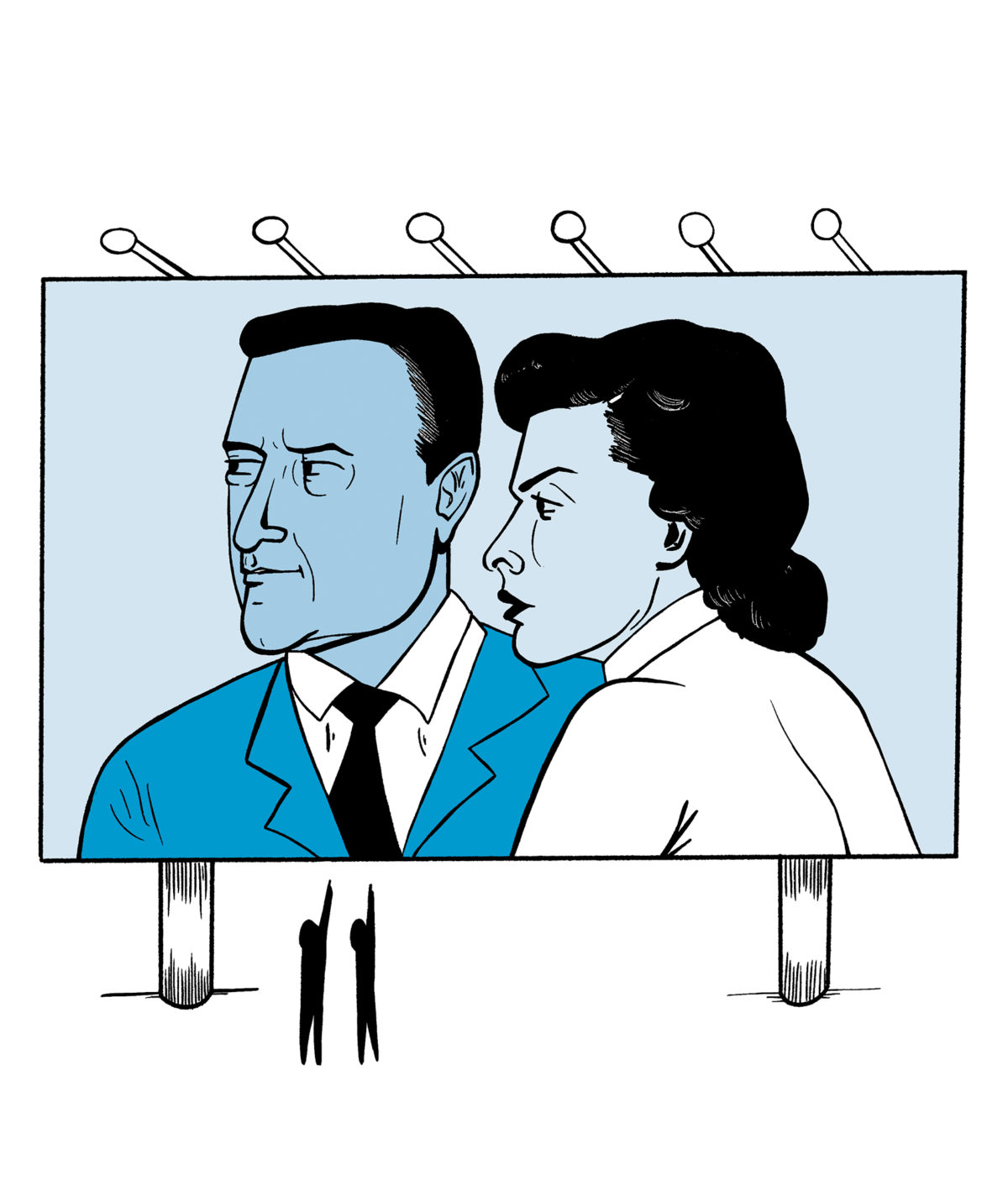
4. MISADVENTURE
In Gus Van Sant’s Last Days, there is a sequence in which a detective played by the magician Ricky Jay is driven up a country road. The scene is a single shot framed through the car’s front windshield. The camera includes all of Jay’s upper body and some of the driver’s next to him. Because the cinematographer isn’t using a polarized filter, Jay is obscured by the rolling clouds and trees reflected in the windshield. We hear Jay monologuing about Chung Ling Soo, the stage name of a white American magician who met an early death when he failed to catch a bullet in his teeth. The coroner’s report, Jay says, ruled it “death by misadventure.”
Death by misadventure: a British legal term meaning accidental death due to risky behavior. The twentieth century’s first decade of driving was full of death by misadventure, usually inflicted by the West’s ruling class upon itself in the form of breakneck joyrides and lethal road races. The early automobile—expensive, untested—was a luxury death machine. To give one example, at about the time Chung Ling Soo was catching bullets in his teeth, Marcel Renault, cofounder of the Renault corporation, was one of five drivers killed during the 1903 Paris-Madrid auto race. (Three spectators were also killed and many more wounded.) The contest was so deadly that an emergency session of the French Parliament ordered the race to end prematurely at Bordeaux.
Vehicular misadventure was also coursing through the American continent. A year after Marcel Renault cracked up on a French roadside, William Kissam Vanderbilt II, grandson of Cornelius Vanderbilt, founded the US’s first annual auto race, the Vanderbilt Cup. From the beginning, the Cup contracted American Mutoscope and Biograph Company, soon to be the country’s biggest film studio, to supply newsreels of the event. But after only a few years, it became apparent that Biograph’s newsreels lacked an essential quality: excitement. On the ground, along the Cup’s Long Island route, the feeling was one of danger. The spectators knew an out-of-control car could wipe them out in an instant. On film, however, the races looked very different. Cars were reduced to slow-moving smudges. Speed was notional, sound absent. Danger could only be inferred.

In 1910, the Vanderbilt Cup and Biograph turned to the director David Wark Griffith for advice on how to make the newsreels more exciting. At the time, Griffith was an unknown Biograph contractor, but he would later be recognized as one of the most innovative and infamous directors of the twentieth century. Griffith suggested changing the film stock and lenses to restore the race’s speed and blur, but his solutions also reached beyond the technical. What the newsreels lacked, Griffith thought, was narrative. The audience must identify with the drivers’ struggle to win. To do this, cameras should be attached to the speeding cars with their lenses pointed in toward the driver and out to the road in front of him. Rather than being on the sidelines, viewers should be placed where they had never been before: in the driver’s seat of a vehicle going sixty miles an hour.
The race organizers refused. The solutions, though intriguing, were expensive. Plus, these were newsreels, not adventure stories. If Griffith wanted to make exciting narrative films, he should do it, but not with the Cup’s money.
5. CROSSCUT
The organizers should have anticipated that Griffith would want to narrativize their newsreels. Biograph was locked in an arms race with its rival, Edison Studios. The competition was for the future of film: studios wanted to tell more-complex stories, so filmmakers needed to develop more-sophisticated narrative devices. Over a period of five years and after close to five hundred films, Griffith and his collaborators at Biograph invented modern montage. Many of the fundamentals of the film form—close-ups, long shots, dissolves—preceded Griffith’s work, but his innovation was synthesizing these elements into new, multifaceted narratives. His extensive use of parallel cutting between multiple scenes was particularly useful for telling stories with a complexity rivaling that of the epic novel.[1]
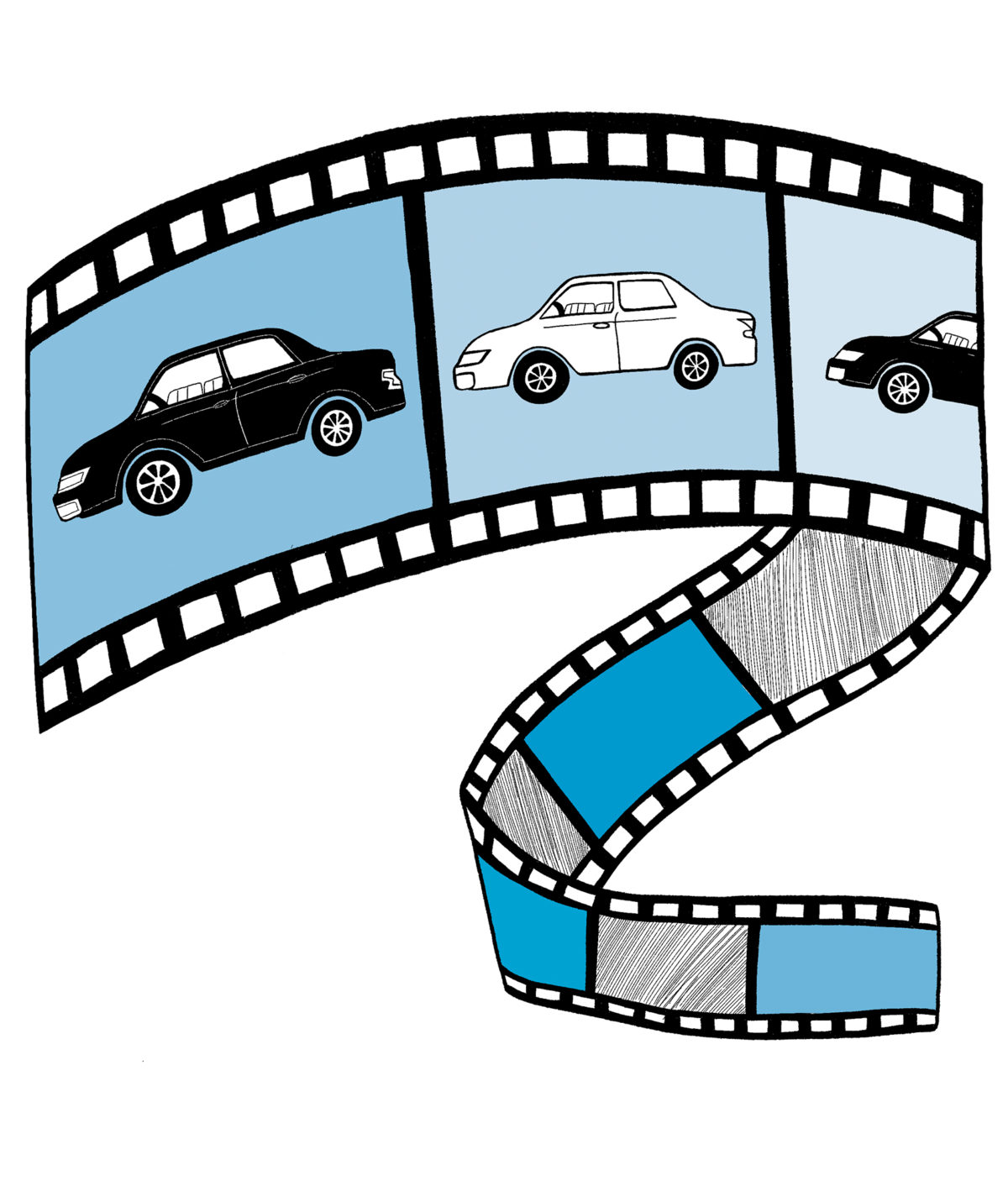
By 1910, the year Griffith consulted with the Vanderbilt Cup, the automobile had appeared mostly in documentaries and non-narrative “trick films” shot with car-mounted cameras. Among the earliest narrative films to feature automobiles was The Runaway Match, or Marriage by Motor, directed by Alf Collins and released in 1903. In the five-minute short, a couple elopes in a car, only to be pursued by a second car driven by the bride’s father. A chase sequence follows—probably the first car chase in movie history—during which car-mounted cameras cut between pursued and pursuer. Six years later, Griffith made The Drive for a Life, the era’s most sophisticated automotive drama. The story, as in nearly all of Griffith’s films, is organized around women in danger: a husband-to-be speeds in his automobile to his fiancée’s home in order to prevent her and her sisters from eating a box of poisoned chocolates. In eighteen shots, Griffith crosscuts between the man’s car and the fiancée’s unboxing of the chocolates, slicing time and space into ever-smaller increments, creating a Zeno’s paradox of climactic postponement. The automobile eventually arrives and the woman is saved, though not before what seems like an eternity of crosscutting. As a contemporary review of the film described, “[The sisters] have the sweets at their lips for an interminable length of time, so long that we are sure their arms will be paralyzed…”
In 1913, after the studio refused to fund Griffith’s more ambitious film projects, he quit. The director would go on to make 1915’s The Birth of a Nation, a racist twelve-reel screed partially responsible for reinvigorating the Ku Klux Klan. Set during the American Civil War and Reconstruction, Birth’s chases crosscut Klansmen on horseback and terrorized African Americans, with Wagner’s “Ride of the Valkyries” as orchestral accompaniment. While white critics praised the film, and Woodrow Wilson screened it at the White House, the National Association for the Advancement of Colored People organized nationwide protests and called for the film to be banned. Soviet filmmaker Sergei Eisenstein later wrote in his essay “Dickens, Griffith, and the Film Today” that Griffith’s racism, his Manicheanism, and his bottomless fondness for crosscutting didn’t coincide accidentally. His racism, he argued, was based on a view of history and humanity made of irresolvable opposites—rich and poor, male and female, black and white—doomed to perpetual conflict. Griffith, Eisenstein wrote, would be forever crosscutting between social forces he didn’t understand,
always parallelizing, always keeping people on separate tracks.
6. CUT-UP
In the years between 1908 and 1913, while Griffith was inventing modern montage, Henry Ford, founder of Ford Motor Company and creator of the Model T, was streamlining industrial mass production. Griffith fragmented the time and space recorded on film, splicing actors into medium shots, close-ups, and inserts, just as Ford’s auto plants broke down manufacturing labor into smaller and smaller units of work, isolating movements so that Ford no longer needed a whole, able body to perform any one task. On the Ford assembly line, a working arm alone would do. Griffith, too, no longer needed a single professional actor to represent a character. With modern montage, the production could rely on body doubles, stand-ins, hand models, stuntpeople, even multiple actors playing the same role. Actors, like factory workers, became interchangeable parts, cut-up movie characters dismembered on the factory floor.

7. CORPSE
While writing North by Northwest, Alfred Hitchcock and his screenwriter, Ernest Lehman, planned to set a scene on a Detroit assembly line. In the foreground, the film’s protagonist, played by Cary Grant, is talking to a factory foreman. In the background, a car is being assembled step by step, from the first piece to the last. When the car is finally completed, the foreman opens one of the front doors and a corpse slumps out. But Hitchcock and Lehman couldn’t figure out what happens next. The scene was abandoned.
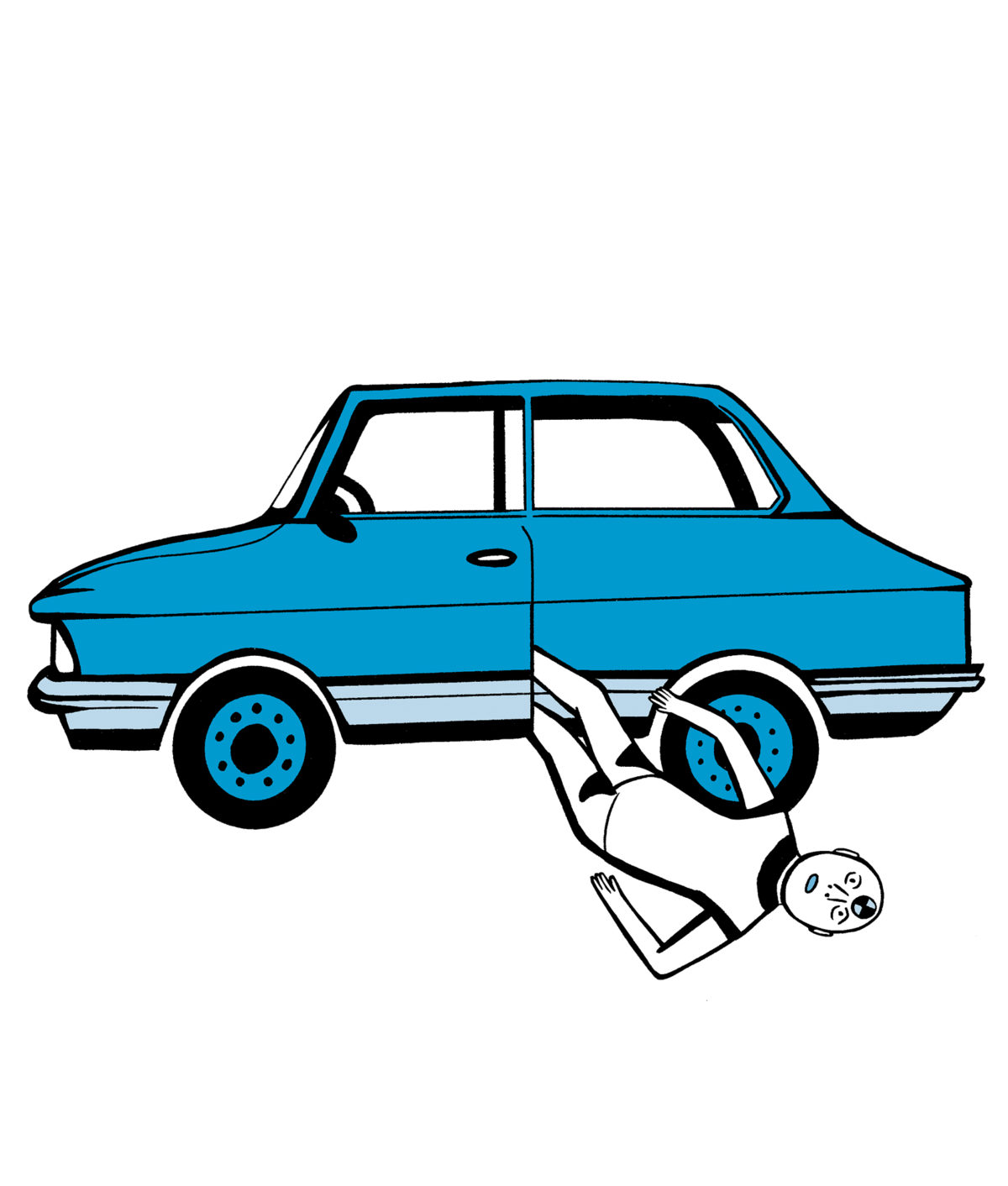
There wasn’t a place Hitchcock didn’t think of putting a body: in a trunk, a lifeboat, the Statue of Liberty, a Spanish mission, an amusement park, on Mount Rushmore. Anywhere, really, that a body could fit. It’s a wonder it took him so long to drop one onto the assembly line. Echoes of Hitch’s unrealized scene would appear, more than forty years later, in Steven Spielberg’s science fiction film Minority Report. A government agent chases police chief John Anderton (Tom Cruise) through a fully automated, workerless factory that makes driverless cars. During the chase, Anderton drops off of a platform, taking his pursuer with him. They land in the back of a half-constructed automobile. Around them, robotic arms whirl in and out of view, riveting and lasering parts into place. The agent escapes by grabbing one of the arms and being lifted away, while Anderton remains trapped in the car. An engine is dropped into the chassis, almost decapitating him. A door is attached on his left. A front seat drops from above, perhaps crushing him. Finally, the finished car rolls into the paint room and nozzles spray its body red. It’s then that Anderton sits up in the front seat, alive and unhurt, as the car drives itself out of the paint room and onto the streets of Washington, DC.
8. DECISION
Footage of another auto race, this time in the Mojave Desert, 2004. The video is shot by the race’s organizer, the Defense Advanced Research Projects Agency (DARPA), which is responsible for, among other inventions, building ARPANET, the first internet. The vehicles—pickups and dune buggies, mostly—roll out from the starting line one at a time, traveling no more than a few miles per hour. Some advance in fits and starts; others lunge dangerously into the race’s first turn. One flips over and is disqualified. All of the vehicles are driverless, their front seats packed with computers and sensing devices. A male voice introduces each and provides some entr’acte commentary:
Ladies and gentlemen, a few years from now you’re going to take autonomous vehicle technology for granted. You’re going to get into your car, drive to the freeway, program the car to take you someplace, and then you can legally use the cell phone while the car drives itself.

The race, known as the DARPA Grand Challenge, was organized in order to make this future a reality. In 2004, driverless technology was largely useless, and DARPA hoped the Grand Challenge would change this fact. Amateur and professional engineers from across the country raced their jerry-rigged vehicles in the hopes of taking home a one-million-dollar prize. None of the vehicles could complete the 150-mile trip, however, and it wouldn’t be until the next year’s Grand Challenge that a contestant claimed the prize.
Slowly, over the next decade, cars began to drive themselves, first on racetracks, then on city streets. In order to drive, they first had to learn to see, which they do through a combination of digital video cameras, radar, laser-based radar, and GPS. One of the more crucial components of this system, machine vision, has made tremendous advances in the last decade, though much work remains to be done. In 2014, the Society for Automotive Engineers created six standardized levels of automation, with 0 representing “no automation” and 5 representing “full automation” requiring no human intervention. As of this writing, most of the industry remains stuck at level 3, “conditional automation,” in which the vehicle is required to have an alert human driver regularly intervene during the ride. Level 4 vehicles exist in very limited use, and level 5 vehicles do not yet exist.
Current automated driving systems still fail to respond to some of the most common occurrences in a driving environment (an improvised sign on the side of the road, for example). Driverless systems are also blind to much of the human symbolic universe: flashing headlights, waving hands, a driver’s psychology as revealed by their speed and movements. Without this understanding, the cars’ AIs remain prone to catastrophic error, a fact that has exposed the entire industry to well-founded public anxiety. In March 2018, after a pedestrian was killed by a level 3 Uber car in Arizona, the company shut down its program in the state and chose not to renew its operating permit in California. (The permit was reissued in February.) This fatality is the only one caused by a level 3 car, whereas five people have been killed by level 2 cars. To get an idea of how risk averse the auto industry has become, remember that more people died during the first leg of the Paris-Madrid race.
The need for autonomous vehicles to make life-or-death decisions—or, even worse, death-or-death decisions—has led to ethical thought experiments whose rationality borders on perversity. If, given the circumstances, a machine must kill a pedestrian, whom best to kill: A child or an adult, a jaywalker or a person in a crosswalk, a homeless person or a suit-wearing professional?[2]
9. OBSTRUCTION
Driverless vehicles have rarely appeared on-screen, perhaps because they do so little for narrative action. Usually they are campy obstacles serving only to be smashed or blown up. One example is Johnny Cab, the annoying robotic taxi driver in the 1990 film Total Recall. Johnny Cab resembles a ventriloquist’s dummy. He is obtuse and hard of hearing, unable to help Douglas Quaid (Arnold Schwarzenegger) escape Uzi-wielding bad guys. Johnny Cab ends his screen life, fittingly, engulfed in an explosion. Not to be outdone, Demolition Man, a 1993 action satire about a politically correct future, features less campy though no less annoying autonomous vehicles. The cars are overly complicated to drive, and the film’s anachronistic protagonist, John Spartan (Sylvester Stallone), gives up after a few seconds behind the wheel. (His female partner has no problem, however.) Like much of the film’s future-dystopian technology and law, autonomous vehicles represent uptight, risk-averse obstacles to macho pleasure.
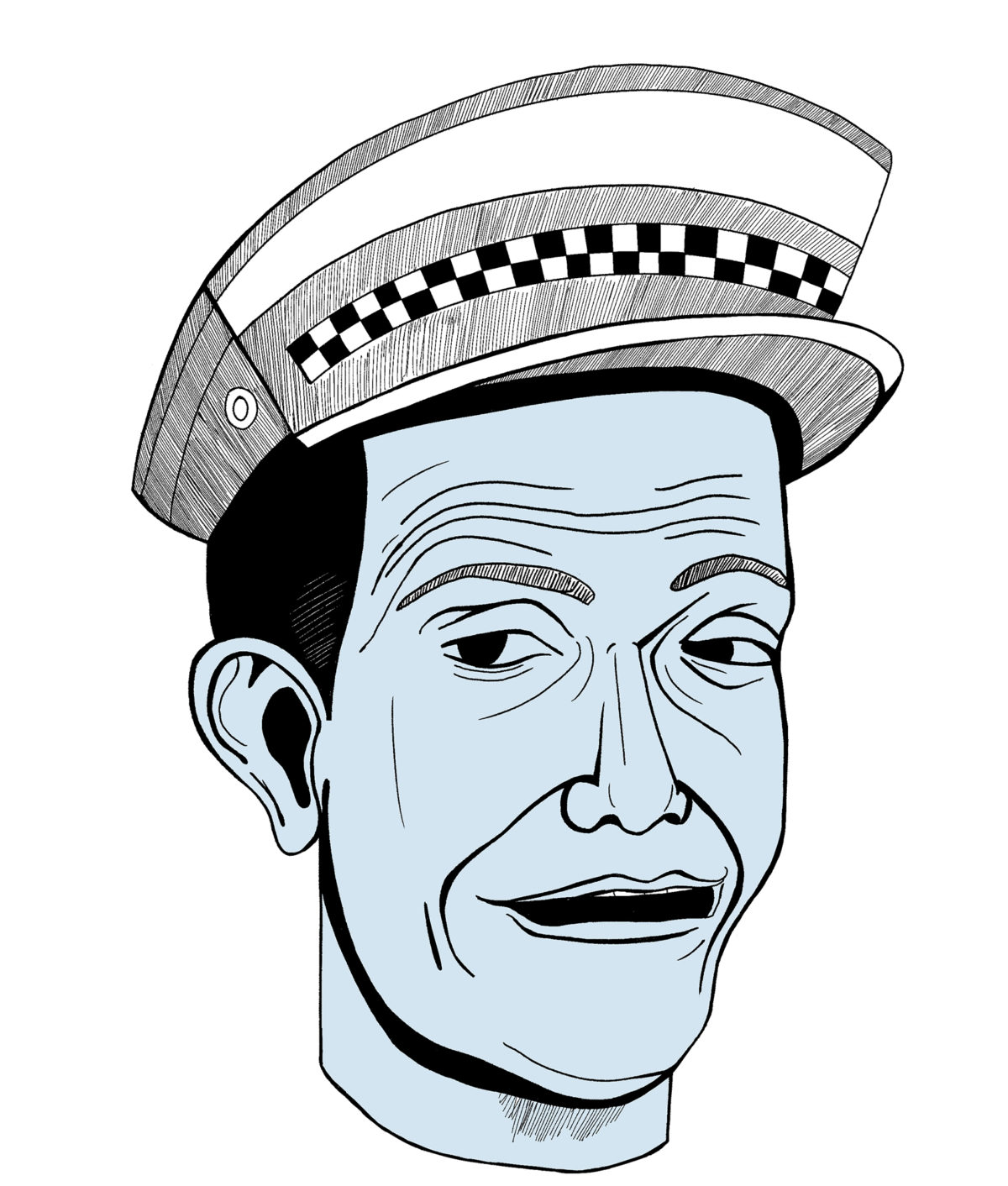
The car that transports Anderton out of the factory in Minority Report is driverless, and why it leaves so quickly is never explained. The film’s cars not only speed around the intricately constructed horizontal thoroughfares of near-future Washington, DC, they also scale the sides of skyscrapers in order to deposit passengers directly inside their apartments. Once again, the car’s autonomy is directly at odds with the hero’s: during another of the film’s chase scenes, Anderton kicks his way out of a vehicle and flees by jumping onto passing cars.
In Logan, a 2017 film set in the near future, the titular character, played by Hugh Jackman, has been reduced from a superhero to a cash-strapped limo driver. The highways are shared with driverless “auto-trucks” that, in one crucial scene, force both Logan and a family off the road, thus taking the story on an unexpected detour. (A first for the movies: characters brought together by an accident involving a driverless vehicle.) Later, we learn that the near collision might not have been accidental, and that the family is being hounded by a beverage company intent on taking their land. The truck may have been programmed to kill them, the father speculates, but the film never reveals the true cause.
10. SYSTEM
A construction worker is stranded on Mars. A superhero is no longer a superhero. Cops can no longer fire their guns. From Total Recall to Logan, a male protagonist is in crisis and a driverless vehicle threatens his agency. The resulting conflict between man and car is often absurd, almost pathetic. But in their own crude and patriarchal way, these films do contain a truth: the future of driverless technology is a struggle over agency and control. This is because a driverless vehicle is not really driverless, nor is it autonomous. It’s a node in a system that is centrally controlled by a private corporation. A more accurate designation might be “corporate-driven vehicle”—a vehicle made up of cartographic machine-vision, steering, entertainment, and various artificial intelligence systems, all of which are controlled by overlapping corporate interests. Each of these corporately owned systems has its own biases, limitations, software warrantees, digital rights, design flaws, and financial agendas. All autonomous vehicles are also, by necessity, surveillance devices. They upload our driving data in real time in order to train neural networks. The data, of course, can also be used by the company’s employees to illegally track passengers. The software currently running on human-driven vehicles has been shown to have serious vulnerabilities, including some that allow hackers to remotely control the vehicle’s steering. Corporate-driven cars stand to make these existing problems larger in scale and more difficult to prevent. Would a system-driven vehicle be susceptible to sabotage by rogue employees, spy agencies, or rival companies? And what trail would such bad actors leave when a car mysteriously careens off the road, killing everyone on board?
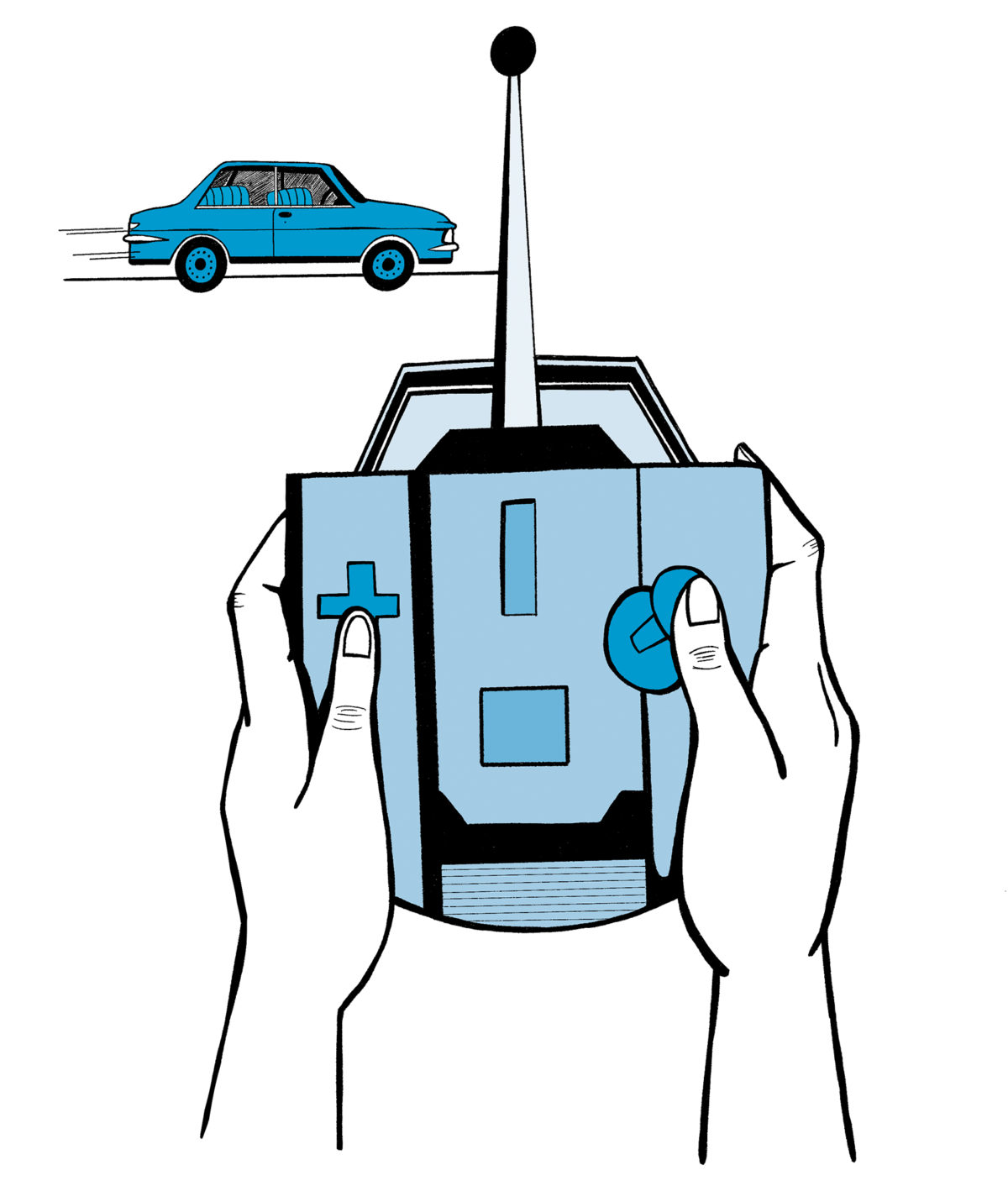
11. SPECULATION
A Bond film that begins with Spectre hacking into the agent’s driverless Jaguar. A Marvel film in which a supervillain takes control of all the driverless cars in the world, turning them into a weapon of mass destruction. A Christmas-season romantic comedy about New York’s last taxi driver. A Disney reboot of the Herbie series in which the lead VW Beetle is now an AI. A remake of Vanishing Point in which all the cars are driverless except for Kowalski’s. A remake of Strangers on a Train, retitled Strangers, that exchanges the train for a driverless carpool. A driverless cross-country road movie in which the solitary lead character spends much of the film on her phone. An Academy Award–nominated drama about two writers living in New York who meet when their driverless cars get into a fender bender. An urgent documentary about Amazon’s driverless car monopoly. A social-realist miniseries about an out-of-work truck driver that ends with the driver’s suicide. Films in which the driverless car’s AI becomes a cheery chauffeur-like character, not quite sentient, but more than a digital assistant. Countless films in which characters must remember how to drive or must figure out how to drive for the first time. Driverless car porn. A paranoid political thriller in which two characters plot to overthrow the US government while riding in a driverless limo. A horror film series, Driverless, in which high school teens are serially killed by a phantom-possessed driverless SUV.
12. PSYCHOSIS
A Plymouth auto plant, 1957. Fully assembled white Plymouth Furys glide down the line, workers inspecting them from above and below. A bell signals that the shift is over. While the workers leave the floor, a foreman checks his watch. He notices that a red Fury’s headlights are on. Buddy Holly’s “Not Fade Away” plays from the car’s radio. The foreman crosses onto the assembly line and opens the Plymouth’s driver’s-side door. A dead worker tumbles out onto the floor.
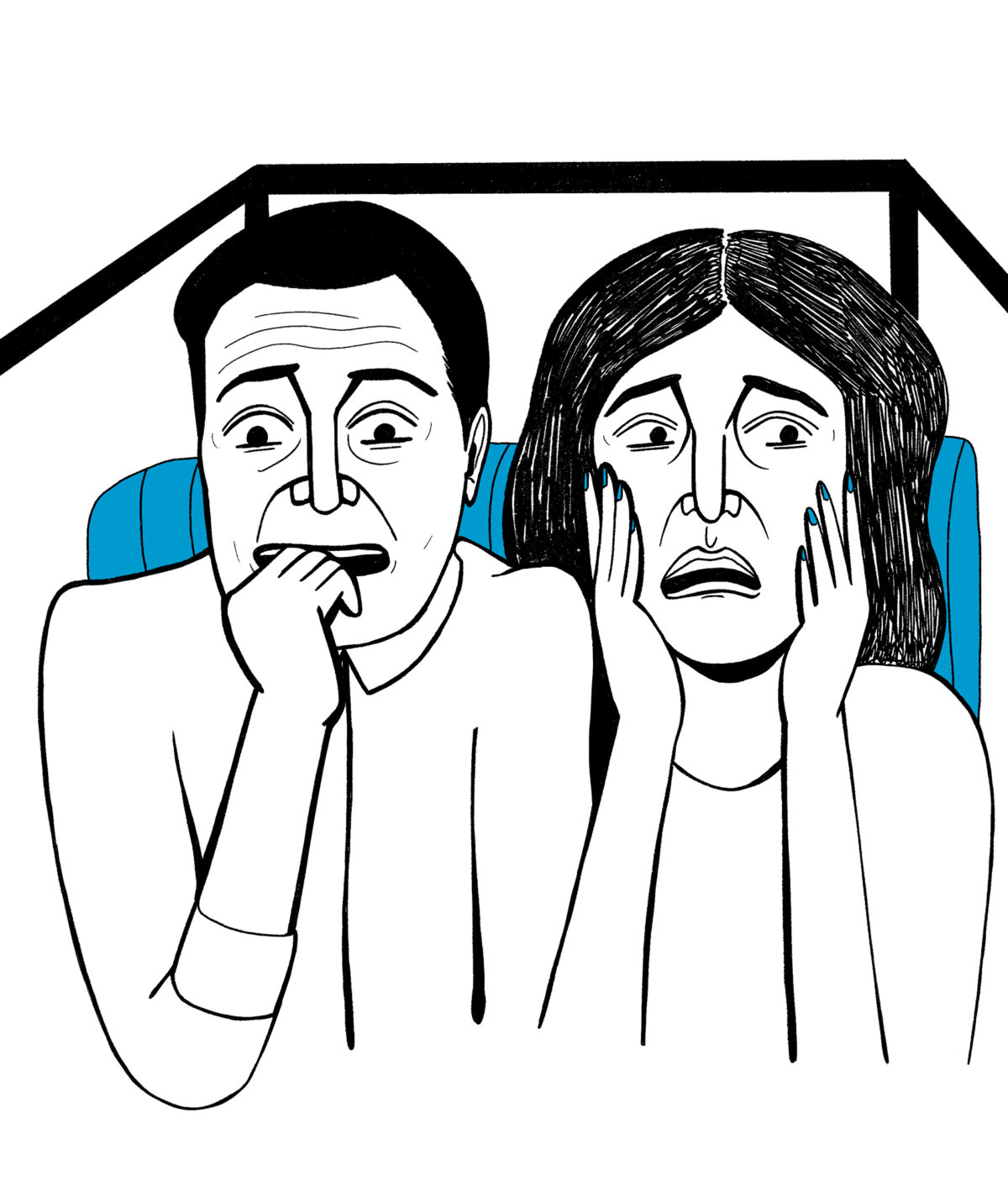
The movie is John Carpenter’s Christine, adapted from a novel of the same title by Stephen King. Christine is the name of the red Plymouth in the opening scene, a killer car we later learn is piloted by an invisible psychotic spirit. In the film, which is set in 1978, Christine is purchased secondhand by a nerdy teen boy who becomes obsessed with rehabbing it. As he restores Christine, Christine restores him. His clothes become cooler, his hair better styled, his demeanor more confident, until his behavior is so assertive he seems nearly psychotic. Christine jealously guards him, attempting to kill anyone that gets between them. The film’s most memorable images are of Christine at night, windows blacked out, driver’s seat empty, high beams searching for prey. The car becomes a driverless killer, massacring teenager after teenager with unstoppable supernatural force. It’s pure Freudian death drive: single-minded, zombielike, doomed to repeat the same traumatic scene. Whenever Christine is smashed or burned, the car’s chrome, hood, and paint heal, broken glass flies back into place. In the film’s final shot, just after Christine has been compressed into a cube by a compactor, we see a quiver of metal: a suggestion that Christine will return, perhaps in a sequel.
Christine isn’t the only killer car in the movies, or even the first. There are also the trucks of Stephen King’s Maximum Overdrive (1986), the bulldozer of Killdozer (1974), the black sedan of The Car (1977). There are others, too, scattered on the backroads of the straight-to-video horror market, whose larger territory is shared with killer computers, killer dolls, and legions of haunted consumer products. Taken together, the campy monstrosities tell a familiar story: when consumer products no longer gratify, they betray their owners, and the possessed terrorize the possessors. (“Sometimes ownership can become possession,” reads the tagline of a recent print edition of Christine.)
This is Marxist commodity fetishism at its most gothic. Marx was the first to observe that under capitalism, commodities, including what we would call consumer goods, take on a magical life of their own. This life, replete with what Marx called “theological niceties,” obscures the commodity’s use value and the labor that went into its making. Cars, diamonds, and shoes, for example, are celebrated for their market value rather than for their usefulness. (A pair of shoes is only as useful as a pair of shoes; brand recognition and celebrity endorsements are what drive shoe sales.) In advanced capitalist economies, commodities appear autonomous from the conditions that produced them, and, like a fetish and its worshipers, commodities control consumers who are all too happy to let their possessions define them.
Christine’s killer Plymouth enacts this relation almost exactly. It drives itself, seduces its owner, and covets him when he is absent. Christine’s owner, as the novel’s tagline emphasizes, is the one who is owned, and over time he becomes more like the car than the car becomes like him. The terror at the heart of Christine and other killer car films is similar to that of the worshipper for the fetish: a religious fear that the uncanny object will dominate, or even end, one’s life.
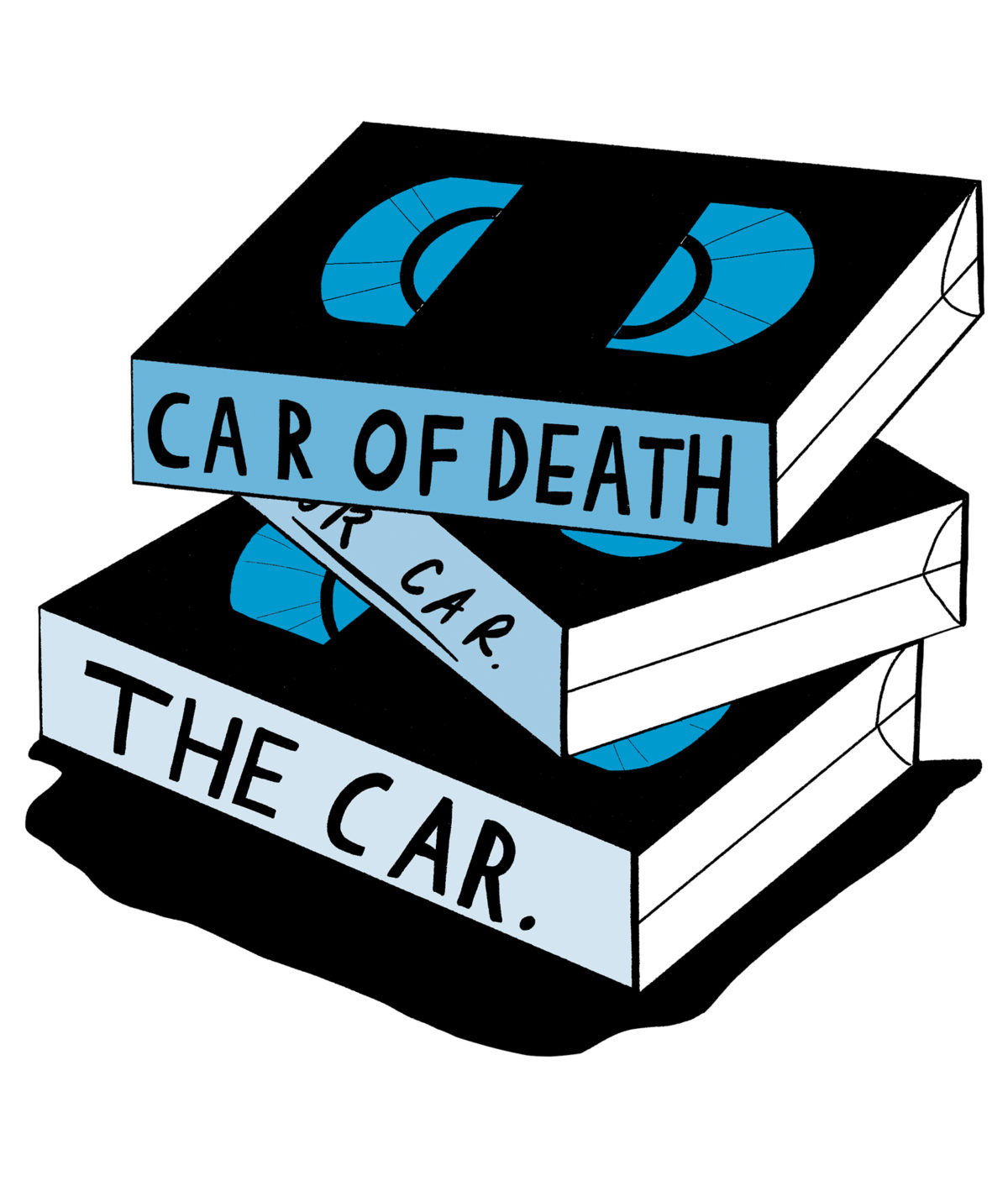
If analog consumer goods were silent witnesses to our alienation, so-called smart devices—including most automobiles, autonomous and not—are now its noisy collaborators. Our new smart homes, cars, televisions, doorbells, and speakers stalk us day and night. They keep us in line at work, report us to the authorities, and shame us when we don’t live up to our promises. Our devices act as both triggers for our anxiety and antidotes to calm us, all the while extracting data points for further manipulation. With every new digital service we adopt, we cede a small terrain of control, until we eventually find ourselves powerless over the objects that surround us.
That is the story line of the near future: a protagonist overwhelmed by objects neither alive nor dead. In this future world, a protagonist can’t slide behind a steering wheel and leave it all behind. What she is escaping is right there in the car with her, recording her every move. The open road will never be open again, and the road movie will become like the Western: a document of a time that no longer exists.




